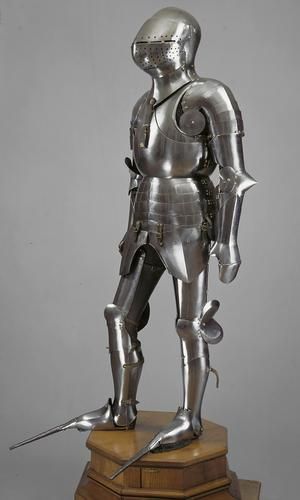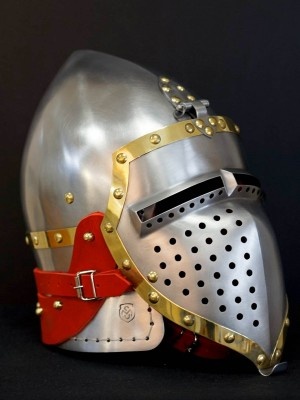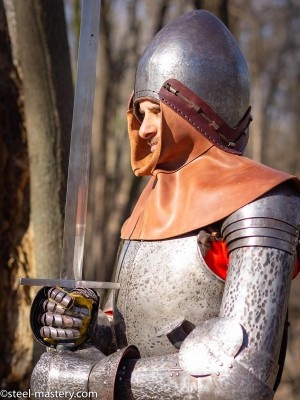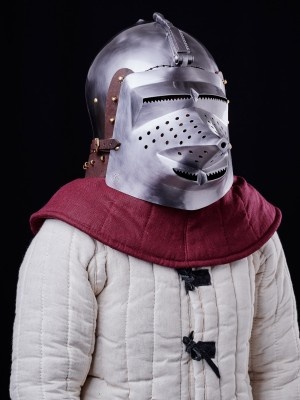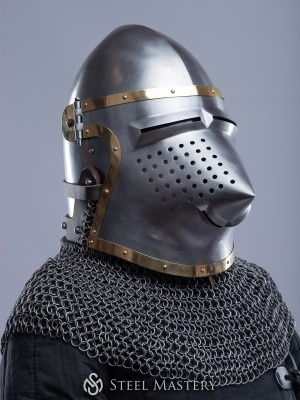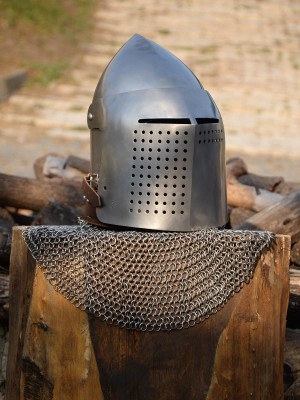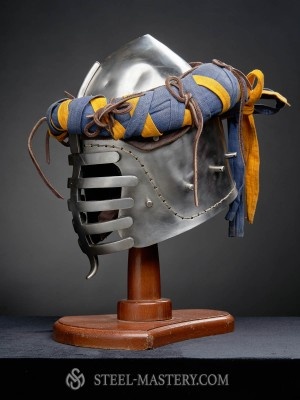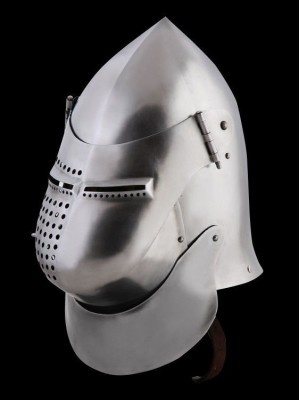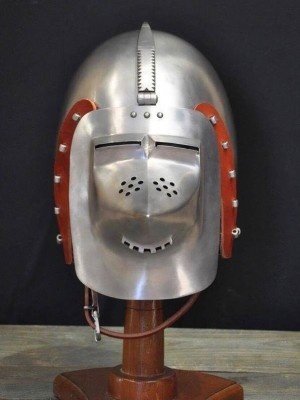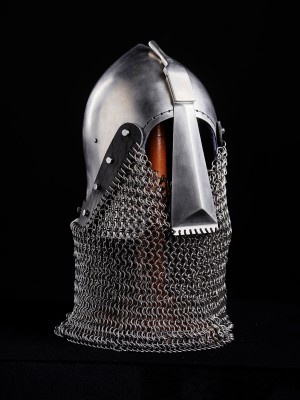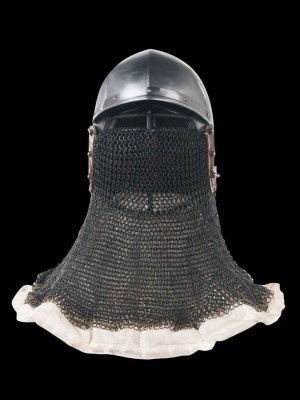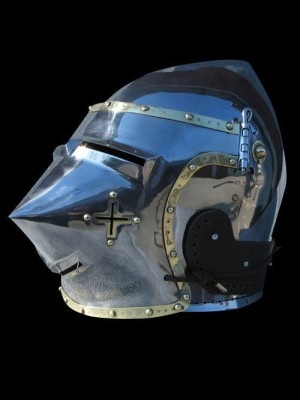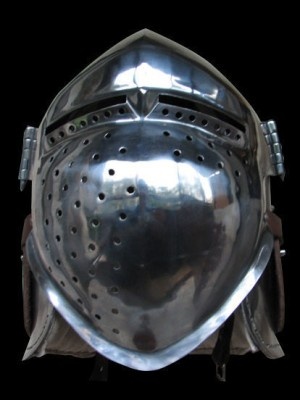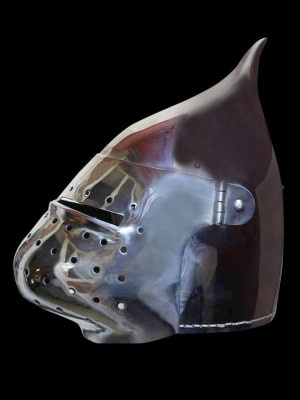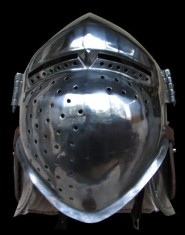Über Bascinet (Hounskull, Klappvisor etc.) helmets
Bascinet helmet evolution
Bascinet was XIV-XVth centuries’ most popular helmet among both knights and modest infantry.
Having arisen under Great helmets, they evolved from cervelliere. Over time, they replaced their predecessors, becoming the most popular medieval head protection from then until now.
After the first third XIVth century, bascinet got an aventail to cover neck as well as shoulders. Later it was replaced by gorget. But in the middle of XVth, a very interesting bascinet with "plate drapes" instead of aventail or gorget appeared – like field plate of Elector Frederick I. You can see it at Kunsthistorisches Museum Vienna.
Bascinet’s dome
Early bascinet's small globular dome was worn itself in the first half of XIVth century. It was transforming into ever-more-conical as well as extending down to cover one’s head below the ears and neck. By 1450 dome's almost globular form became common while later dome's shape could be smooth or had a ridge.
Bascinet’s visor
Most commonly, 4 visors types that have evolved from one another are distinguished:
- Bretache
Face protection appeared in bascinets in the second third of XIVth century but faded a little after. It was one triangular metal piece fastened to dome's brow that covered face from nose to chin – bretache. Bascinet with bretache could be worn under a Great helm, however, gave some face protection even without it.
- Visored bascinets - Klappvisor
Almost simultaneously with bretache, early visors appeared – metal plates, suspended on the brow and covering entire face, with small eye slits plus breathing holes. Helmets with mounting method when visor was hinged at a single point of dome's brow centre were called klappvisor bascinets.
Visor itself has two eye slits and one mouth slit and its breathing holes are usually placed on the visor’s right side. The reason is that most likely enemy’s lance would strike at helmet's left side. Sometimes, even eye slits were crossed with vertical bars. Safe – surely, visibility – bad.
- Visored bascinets - Hounskull
Late XIVth century presented a method of visor fixation to helmet’s sides by hinges with removable pins holding them together – double-pivot. This attaching method allows completely detaching visor just as quickly as easily when it’s needed.
Both fixation types visors (klappvisor or double-pivot) became larger and larger, till around 1380 they were stretched into beak-like conical muzzles. This type of Middle Ages bascinet helmet was named "hounskull" or "pig faced bascinet." Such protruding visor form gave better protection from blows and good ventilation. Look at Bascinet hounskull or Bascinet hounskull with brass decoration and cross on the cheek, if you’re interested.
- Visored bascinets - Rounded visors ("ape-like")
Starting from XVth century, visors fashion shifted to more rounded ones. They got "ape-like" form by the second third of the century becoming almost globular to its middle. As for visor's ventilation holes, they increased in shape and number.
Widely common visored bascinet was a tall conical dome pig faced bascinet.
Bevors and gorgets
From second half of XIVth century bevor appeared for neck protection. When visor and bevor closed each other, they provided level-up protection compared to aventail. Later, at the beginning of XVth century, aventails were replaced by plate gorgets, which protected better while putting its weight to shoulders, not wearer’s head.
As plate gorgets were becoming more narrowed repeating human’s neck form, their plates had to be hinged – otherwise helmet couldn’t be put on. In early great bascinets, rear gorget plate was riveted to the dome, however, later great bascinets were a single-piece dome with rear gorget plate. Moreover, gorget was strapped to cuirass breast and backplate. It made this helmet greatly protective due to firm construction, nonetheless, it lowered wearer's vision and movability.
Inner lining
Bascinet's inner lining was made of wool or canvas filled with cow hair. It was attached to helmet – sewn to small holes drilled on the dome’s bottom. Size adjustments were made using special cord on top.
Great bascinet was replaced by armet and sallet in the middle of XVth century, but it remained in use till XVIth at tournaments. We’ve got one – Bascinet with side hinged bar visor.
Bascinets are gone, but we can forge them all. Steel Mastery’s blacksmiths with over 15 years of experience are just waiting for your choice. It’s a hard one, but we hope that our bascinets review will help you with it. If you still have some questions – contact us via [email protected]. We are always at your service.
Notice that a great variety of XIVth century effigies, sculptures, artworks shows that man had both – bascinet helm and Great helm. These cool guys wear bascinet on their head while holding a Great helm in their hand or use it as a pillow. But that’s common only for VIP persons, so if you feel yourself a VIP medieval person – don't forget to order a Great helm in addition to your early bascinet.
Bascinet with bretache, Museo Poldi Pezzoli, Milan
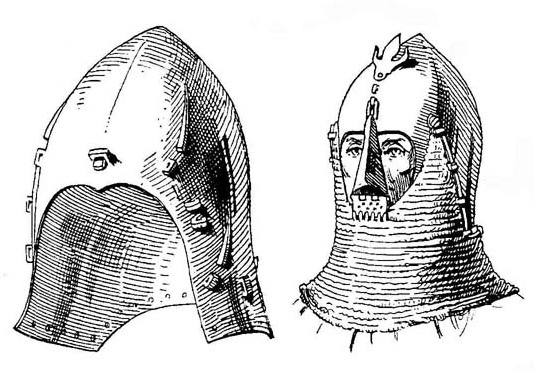
Bowl-shaped bascinet with mail shirt (1360s), German Historical Museum, Berlin
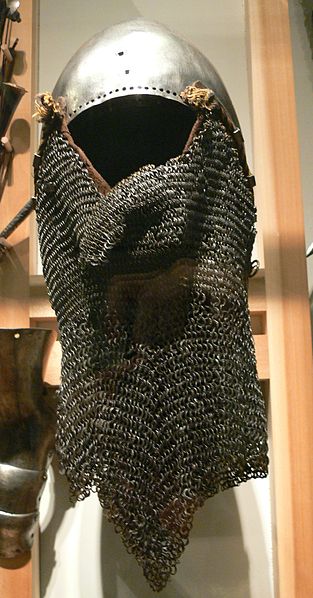
Basinet with Detachable Visor, Metropolitan Museum of Art
_with_Detachable_Visor_MET_04.3.238_002june2015.jpg)
Round visored bascinet, Metropolitan Museum of Art
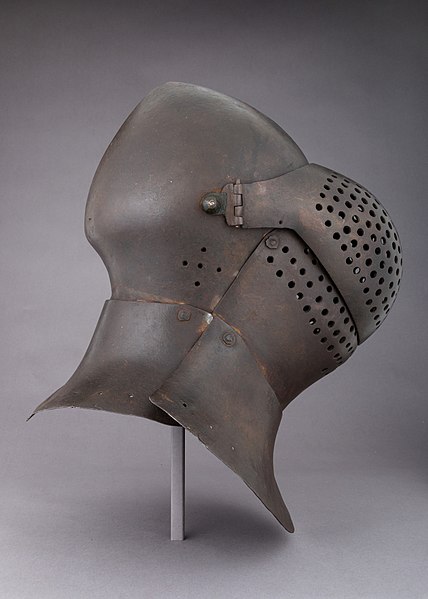
Elector Frederick I bascinet, 1450, Kunsthistorisches Museum Vienna
